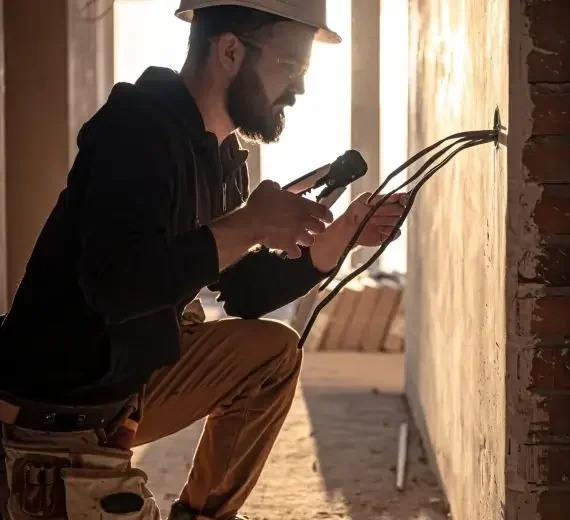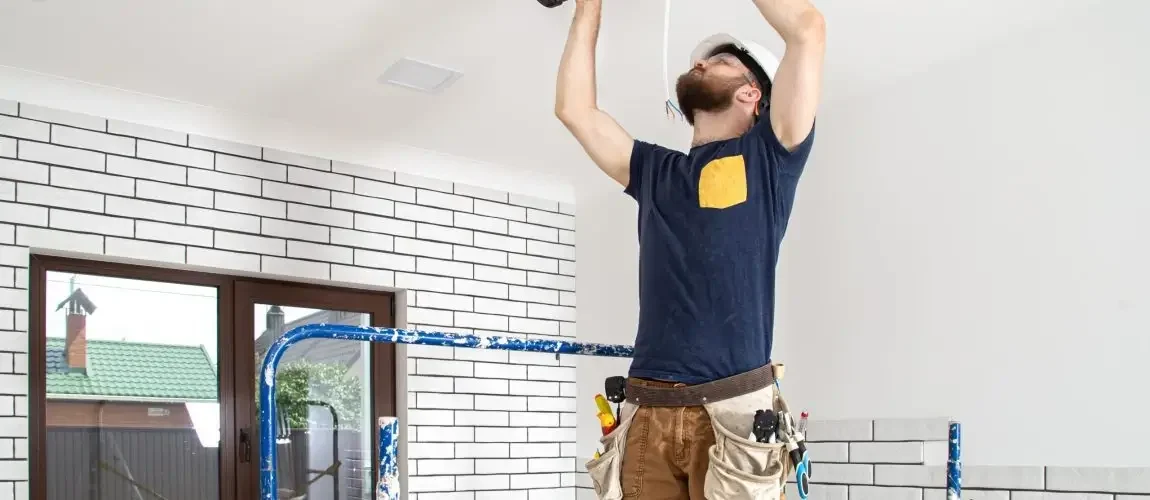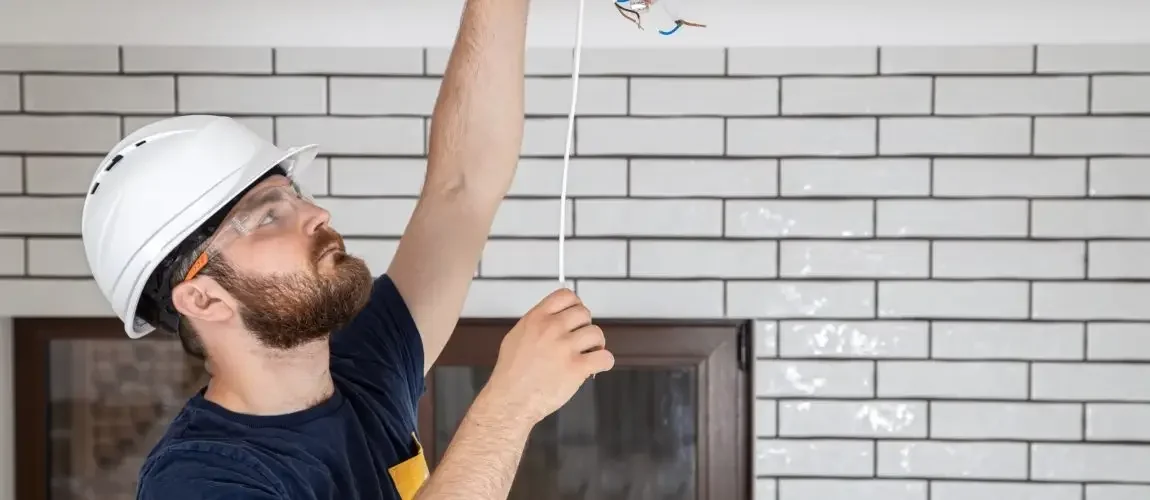Tiny House Wiring for Dummies
Living in a tiny house doesn’t mean you have to forgo all the modern conveniences of home. In fact, with a little bit of know-how, you can wire your tiny house to include everything from internet and television access to heating and cooling.
This guide is for complete dummies like myself who want to live the tiny house dream, but don’t have a background in wiring. This blog post is designed to provide you with a basic understanding of tiny house wiring so that you can make the most informed decisions about what’s best for your home. I’ll take you through every step of the process, from choosing your wires to hooking everything up. By the time you finish this post, you’ll be an expert on tiny house wiring!
So let’s get started!
This guide is for complete dummies like myself who want to live the tiny house dream, but don’t have a background in wiring. This blog post is designed to provide you with a basic understanding of tiny house wiring so that you can make the most informed decisions about what’s best for your home. I’ll take you through every step of the process, from choosing your wires to hooking everything up. By the time you finish this post, you’ll be an expert on tiny house wiring!
So let’s get started!

1. What is tiny house wiring and why do you need it?
Tiny house wiring is the process of installing electrical wiring in a tiny house. This can include everything from outlets and light fixtures to heaters and air conditioners. While some people choose to go without any wiring at all, most tiny housers opt to wire their homes to take advantage of modern conveniences like electricity and running water.
2. What are the benefits of wiring your tiny house?
There are several benefits to wiring your tiny house. For one, it allows you to use appliances and devices that require electricity, like refrigerators, TVs, and computers. Additionally, wiring can provide warmth in cold weather and cool air during hot summers. It can also help you stay connected to the internet and the rest of the world.
3. What are the challenges of wiring a tiny house?
One of the biggest challenges of wiring a tiny house is figuring out how to do it without overloading your electrical system. This is especially true if you plan on using high-wattage appliances or devices, like space heaters or hair dryers. Additionally, running wires through your tiny house can be difficult and time-consuming.

4. What do you need to wire your tiny house?
To wire your tiny house, you’ll need a few basic supplies:
Electrical wire: This is what will carry the current from one point to another. There are a variety of different types of electrical wire, so be sure to choose the right one for your needs.
Electrical tape: This is used to secure electrical connections and prevent shorts.
Wire cutters: You’ll need these to cut the electrical wire to the correct length.
Wire strippers: These are used to remove the insulation from the ends of the electrical wire.
A drill: This will come in handy for running wires through walls and ceilings.
Wall plates: These are used to cover openings in walls and ceilings. They come in a variety of sizes, so be sure to get the right size for your needs.
Outlet boxes: These are used to house outlets and switches. They also come in a variety of sizes, so be sure to get the right size for your needs.
Light fixtures: These are used to provide light in your tiny house. You can choose from a variety of different types, including LED lights, fluorescent lights, and incandescent lights.
Electrical wire: This is what will carry the current from one point to another. There are a variety of different types of electrical wire, so be sure to choose the right one for your needs.
Electrical tape: This is used to secure electrical connections and prevent shorts.
Wire cutters: You’ll need these to cut the electrical wire to the correct length.
Wire strippers: These are used to remove the insulation from the ends of the electrical wire.
A drill: This will come in handy for running wires through walls and ceilings.
Wall plates: These are used to cover openings in walls and ceilings. They come in a variety of sizes, so be sure to get the right size for your needs.
Outlet boxes: These are used to house outlets and switches. They also come in a variety of sizes, so be sure to get the right size for your needs.
Light fixtures: These are used to provide light in your tiny house. You can choose from a variety of different types, including LED lights, fluorescent lights, and incandescent lights.

5. How do you wire your tiny house?
There are a few different ways to wire your tiny house. The most common method is to run electrical wires through the walls and ceilings. This can be done with or without wall plates and outlet boxes.
Another option is to use surface-mounted wiring, which is attached to the outside of the walls and ceilings. This option is less permanent than running wires through the walls and ceilings, but it can be just as effective.
Another option is to use surface-mounted wiring, which is attached to the outside of the walls and ceilings. This option is less permanent than running wires through the walls and ceilings, but it can be just as effective.
6. How do you hook everything up?
Once you’ve run the electrical wires to where they need to go, it’s time to hook everything up. This includes attaching the outlets, switches, and light fixtures. It’s important to follow the manufacturer’s instructions when doing this, as improper installation can lead to electrical problems down the road.
7. What are some common mistakes people make when wiring their tiny houses?
One of the most common mistakes people make when wiring their tiny houses is not following the manufacturer’s instructions. This can lead to electrical problems down the road. Additionally, people often make the mistake of using too much or too little electrical wire. This can also lead to problems, so be sure to use the correct amount.
Another common mistake is not using electrical tape to secure electrical connections. This can cause shorts and other problems.
Finally, people often make the mistake of not using outlet boxes or wall plates. These can help prevent shorts and make your tiny house look more polished.
Another common mistake is not using electrical tape to secure electrical connections. This can cause shorts and other problems.
Finally, people often make the mistake of not using outlet boxes or wall plates. These can help prevent shorts and make your tiny house look more polished.
8. How to troubleshoot electrical problems in your tiny house
If you’re having electrical problems in your tiny house, there are a few things you can do to troubleshoot the issue:
Check the manufacturer’s instructions: This is a good place to start, as you may be able to find a solution to your problem.
Check your wiring: Make sure all of your connections are secure and that you have used the correct amount of wire.
Check your outlets and switches: Make sure they are properly installed and that they are not damaged.
Call a professional: If you’re still having problems, you may need to call an electrician or another professional for help.
Check the manufacturer’s instructions: This is a good place to start, as you may be able to find a solution to your problem.
Check your wiring: Make sure all of your connections are secure and that you have used the correct amount of wire.
Check your outlets and switches: Make sure they are properly installed and that they are not damaged.
Call a professional: If you’re still having problems, you may need to call an electrician or another professional for help.
Conclusion
Now that you have a basic understanding of tiny house wiring, you can make informed decisions about what’s best for your home. If you need help finding the perfect tiny home for your needs, be sure to visit www.vacavia.com.
With a little bit of know-how and some elbow grease, you can wire your tiny house to include all the modern conveniences of home!


